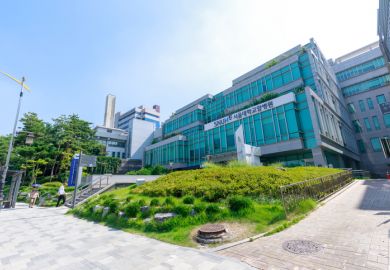Robert Dunlop takes pleasure in a revolutionary book on pain Recently, I was on holiday with my family. Several incidents brought home to me how we as a society manage pain. On one occasion, a toddler was desperately trying to walk independently. Suddenly, he fell headfirst. He looked surprised, but there were no other signs of injury to pride or person. When tears failed to materialise, the mother's relief and anxiety were translated into: "Well done, what a brave boy you are." However, there were other occasions where the outcome for child and parent was not as comfortable. When the crying started, there would be cuddles and soft talking. If these failed, the rejoinder would be: "Be brave..." or "Stop crying, it didn't hurt that much!" These were poignant reminders of how we all retreat from painful situations when we feel powerless to help.
Pain and suffering have always been an integral part of the human experience. Before sanitation improved life expectancy, accidents, injuries and childbirth were common causes of pain. When poultices and alcohol did not work, the same distancing strategies were enshrined in religious lore: it is good to suffer. Now that people are living longer, chronic pain is becoming ever more common. Cancer and arthritis are just two conditions that contribute to this. This is an age when Hollywood sanitises anything that is not young and beautiful. Cancer and arthritis are neither. Someone needed to provide us with perspectives on the perennial issues of pain and suffering.
Patrick Wall's book is not only timely, it is also thoroughly engaging. The title suggests a dry, academic tome, but the book is anything but. Its style is informal yet informative. Anecdotes abound, but there is an appropriate balance of scientific reporting. Even the science has been masterfully reworked so it is not only understandable, but also enjoyable. Throughout there are delightful examples of the author's dry wit and humour. For instance, he lists several treatments for pain, each with a short description: gentle massage gets the shortest - "delightful". He describes a condition known as fibromyalgia, where people experience widespread pain and tenderness. Having travelled on many long-haul flights,I had no difficulty in recognising his illustration of people disembarking from an early-morning flight to London. I found myself realising that the missed sleep, the irritability and the stiffness that had made me appear a "sad sight" were part of what looks like a "mass migration of fibromyalgia patients".
At the intellectual level, the book offers an insight into one of the great scientific minds of this century. Wall's early work with Ronald Melzack on the "gate control" theory of pain, arising from "naive" listening and careful observation so as to define what people in pain actually experienced, resulted in a quantum shift in thinking about pain. This elegant theory, first published in 1965 in a paper entitled "Pain mechanisms: a new theory" in the journal Science , eventually led to Wall being rightly honoured with the award of the Royal Medal of the Royal Society.
The gate control theory describes the complex ways in which the nervous system is able to modulate pain. Before it came along, the classical understanding of pain was portrayed in Descartes's 17th-century drawing L'Homme , in which a man is kneeling beside a fire. He appears to be in pain, reaching down to his foot, which is too close to the fire. Descartes shows a long nerve, which starts in the foot and goes up the leg, then via the spine into a part of the brain. The implication is that the nerve transmits a pain signal directly to a pain centre in the brain. Two inferences can be drawn: damage to the body will cause pain; and pain will be the result of damage to the body.
In practice, neither inference is wholly supported. Sometimes the body is severely injured but the person does not experience pain. Wall gives several examples of this. As onlookers, we marvel at such "courage" or feel relief that we are not required to "help". The second inference has been, and remains, positively unhelpful. Many people experience pain without apparent "damage", such as a visible burn, cut or other injury. Too often, these people have been labelled as hysterical, malingering or weak-minded. I come across many situations in my work at St Christopher's Hospice where people have complained of pain for many weeks or months, even years, before someone searched for and discovered cancer. How much worse it is for people who never have any evidence of tissue damage, who suffer for example from chronic lower-back pain.
The gate control theory starts from the same premise, that damage to body tissues or nerves will cause signals to be sent along nerves to the spinal cord. The damage may be catastrophic or it may be so minor so as not to be apparent. Either way, the signals are not automatically transmitted upwards toward the brain. Instead, the signals only go as far as specialised cells in the spinal cord. These cells act as gate keepers. They receive other signals as well as the signals about tissue damage. Some of the other signals will, like the signals about tissue damage, stimulate the gate-keeping cells, causing these cells to "open the gate" and send signals further up the spinal cord and into many different areas of the brain. But some will suppress the gate keeping cells, stopping these cells from signalling and thereby closing the gate. Such inhibitory signals may come from the surface of the body, for example, when we rub the skin after a minor bump or bruise. These signals can also be triggered by treatments such as trans-cutaneous electrical nerve stimulation (Tens), which was developed by Wall and William Sweet. Signals also come down from the brain. If an injury occurs to a sportsperson during a tense game, the signals from the brain may suppress awareness of the injury until the match is over. Conversely, if we expect something to be painful, such as a visit to
the dentist, then even the sound of the dentist's drill can be agonising. We now know that there are multiple levels of gate-keeping cells throughout the spinal cord and the brain. Wall's work has shed light on the wondrous complexity of the nervous system; the gate control theory continues to open up new understanding of pain and new treatments for it.
Meanwhile, Wall has maintained an open mind in his scientific inquiries. Throughout the book, he critically considers new evidence, draws on other observations, then crafts an even more profound understanding of pain: "Pain is not just a sensation but, like hunger and thirst, is an awareness of an action plan to be rid of it." This aspect of the book is not only intellectually satisfying, but also inspirational, the more so because of the modest, understated way in which it is woven into the account.
The book is also appealing because of the amount of information it contains. Very many people who experience chronic pain, or who care for pain sufferers, struggle with pain. All too often, they are misunderstood and treated inadequately. The future appears bleak, frightening, depressing, even overwhelming. The author's explanations about pain and its treatment will not only inform the lay person but will also encourage. In this case, knowledge will bring power and dignity. Although the book contains only a cursory description of most treatments, pain sufferers should find its overviews helpful in directing their further reading. Even readers who do not suffer pain will find the science fascinating and informative. I especially appreciated the discussion of position emission tomography (Pet) scans, which show activation of different parts of the brain in response to pain, and of the problems of people born without the capacity to feel pain.
Finally, there is a disturbing political dimension to this book. An implicit question arises from the author's experience in medical school. Very early in his career, he could recognise the incongruity of the prevailing orthodoxies about pain management. How much suffering would have been averted if other doctors had been able to do the same. Why does the medical profession have such difficulty managing pain and suffering? From my experience of hospice and palliative care, too many cancer patients still do not receive adequate pain killers, despite the work of Cicely Saunders. It is more than 30 years since she showed that morphine was effective for cancer pain and could be used safely throughout the illness. It can only be helpful to give people direct access to this information via books like this.
The author is also very explicit about the problems of research. He cites lack of coordination and has concerns about the inequitable distribution of pain treatment centres, which I would echo. His most important challenge is to governments, which concentrate on reducing social-welfare expenditure, producing an atmosphere in which social and sickness benefits are considered mainly in terms of cheating, fraud, hypochondria and lack of moral fibre. Wall concludes by reminding us that change is needed if people in pain are to receive the support and dignity they deserve. Let us not forget that, difficult as things may be in this country, in developing countries millions die without access even to the simple pain killers that we take for granted.
I thoroughly recommend this book to anyone suffering pain and to anyone interested in broadening their understanding of this fascinating subject and the scientific process in general. I wish I could make the book required reading for healthcare and social-welfare planners, funders and providers. As Doctor Johnson once wrote: "Those who have never felt pain, seldom think it severe!"
Robert Dunlop is medical director and chief executive, St Christopher's Hospice, London.
Pain: The Science of Suffering
Author - Patrick Wall
ISBN - 0 297 84255 2
Publisher - Weidenfeld and Nicolson
Price - £12.99
Pages - 186
Register to continue
Why register?
- Registration is free and only takes a moment
- Once registered, you can read 3 articles a month
- Sign up for our newsletter
Subscribe
Or subscribe for unlimited access to:
- Unlimited access to news, views, insights & reviews
- Digital editions
- Digital access to THE’s university and college rankings analysis
Already registered or a current subscriber? Login



